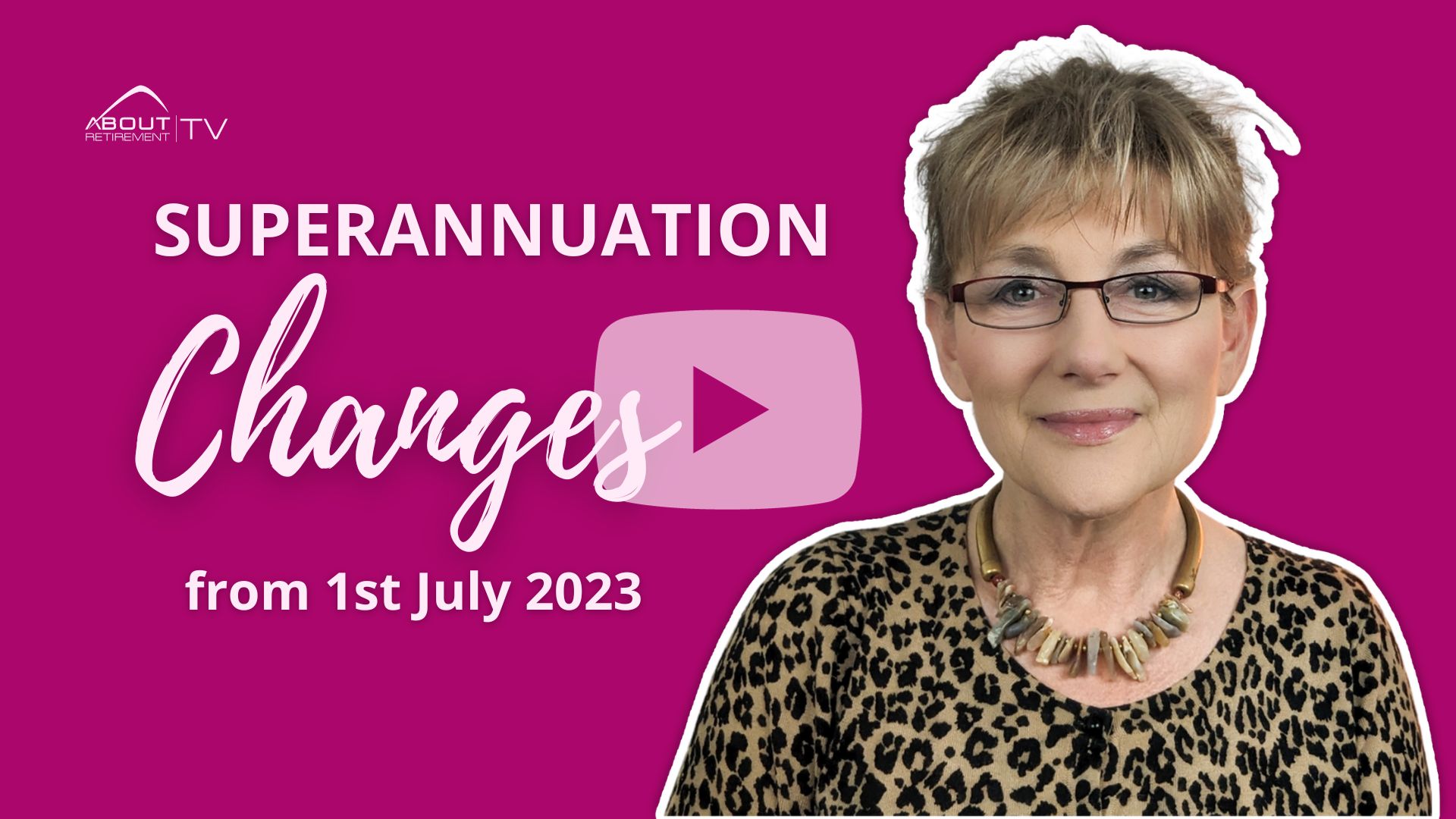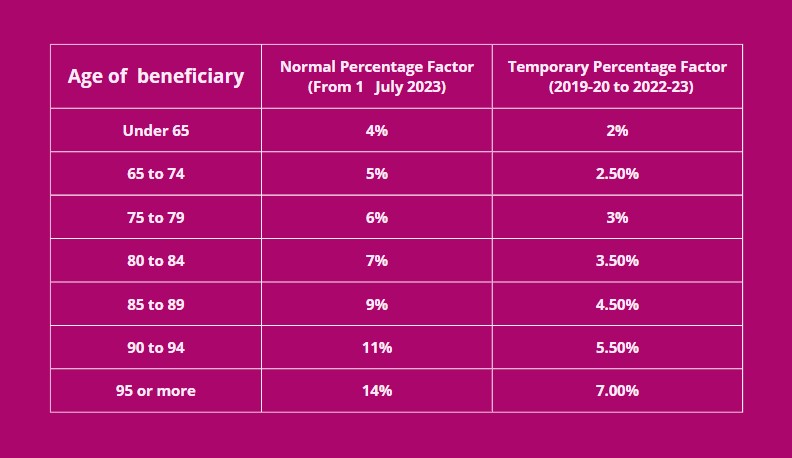
Super changes from 1st July 2023
From 1st July 2023 there have been number of changes introduced to our superannuation system so today we will review some of them.
Superannuation landscape is complex, and no part of your finance should be considered or planned in isolation, this is one of the biggest mistakes many people do when trying to organise their money. In order to be really successful with your financial and retirement planning, one needs to consider many options, the full financial data and all rules and legislation.
And considering ongoing changes, this is becoming a really complex task to stay within the rules and use the system smartly to your advantage.
Super changes starting from 1st July 2023
1. Increase of Super Guarantee
From 1st July 2023 the SG super contributions, so your employer compulsory contributions increase from 10.5% up to 11% of your gross salary. Next financial year from 1st July 2024 SG will go up again to 11.5% and the year after from 1st July 2025 will increase again to 12% and will stay at this level until there are any further legislative changes introduced sometime in the future.
If you wish to learn more about SG to understand if you are receiving the correct benefit, read my article: “Concessional contributions to super – what is SG?”
2. Transfer cap increase
I am not sure how many of you will be affected by this change, but it is essential to know that as much as there is no limit how much you can have in super, there is a limit how much you can transfer from super to an income stream. In the previous financial year the limit was $1.7mil, but from 1st July 2023 this cap is being increased to $1.9mil. Your cap can be different depending on the year you have commenced your income stream. This is actually a pretty complicated area, I would strongly recommend a full financial planning advice to set your income streams correctly.
3. Age Pension age increase
From 1st July 2023 the Age Pension age is being increased to 67. So anyone born after 1st January 1957 now becomes eligible for Age Pension based on age. Now all your have to do is meet the residency rules and have your income and assets within the means testing limits and you could enjoy additional income from the government in the form of the Age Pension together with the jewel of the Pensioner Concession Card. My channel is filled with videos about Age Pension and all the issues that you will have to fix, organise and plan before you step to the Centrelink office with your application, or alternatively complete your application online, which is a preferred way for Centrelink these days.
If you find Centrelink rules a little bit like a maze in addition to superannuation rules, tax rules and planning for your estate, my sincere recommendation is to organise a consultation meeting with me to get organised properly. Details how to contact me are in the description below the video or on my website, but I will explain more about it later on in this video.
4. Minimum pension payments increase
This change is important if you have already retired.
Once we retire, we tend to move our superannuation savings from super – being the accumulation phase to an income stream known as a pension to draw a regular income to support our living expenses.
So what’s changing in July 2023
If you have been retired for the last couple of years you know that you had a choice of drawing a lower level of pension payments from your income stream or a pension fund. This started in 2019/20 and lasted till the end of 2023 financial year. During this time, due to covid, just like during GFC the government introduced a policy to allow retirees to half their pension drawdowns if they could afford it in order to preserve the underlying assets.

Depending on your age, the level of compulsory drawdown will increase quite substantially.
Those pension payments are calculated by your super fund based on the total balance of your pension account on 1st July each financial year and based on your age the appropriate percentage factor will be applied for example:
JOHN:
John is 66 year of age and on 1st July 2022 his pension balance was $700,000. Therefore, based on his total balance value his minimum pension payment last year was 2.5% that equals to $17,500 per annum.
Let’s assume that on 1st July 2023, therefore this financial year, his pension fund balance is also $700,000, but now John is forced to draw a minimum of 5%, therefore his minimum annual payment now is $35,000.
SUE:
Now let’s look at Sue, who has is 86 years of age and she also has $700,000 in her pension account. Last financial year her pension payment minimum was 3.5% and that equals to $24,500pa. From 1st July 2023 Sue will have to draw a minimum of 7% which is a payment of $49,000pa.
Obviously, those payments can be made fortnightly, monthly, quarterly, half-yearly or annually, however you wish, the point is that you no longer have a choice of lowering your income payments from your pension accounts.
That could create an additional problem for many as to receiving the level of income that is not really required, therefore money will start accumulating in your bank account as a surplus income, which in turn could impact your Age Pension eligibility as well as capital growth of any money paid by the pension fund. So further planning might be necessary.
As you can see in my table, the minimum pension drawdown keeps rising with age, why is this happening you might ask.
Well, superannuation system and most certainly pension accounts are designed to provide an income for you during your life expectancy, so those numbers are based on average life expectancy, knowing that at some point, if you outlive your life expectancy the balance of your pension account will be $0.00.
Therefore, if you wish to leave any legacy for your children or other beneficiaries, pension funds are not the way. You have to strategically prepare your overall savings for this occurrence, I repeat pension account are only designed to provide a benefit for you and not your beneficiaries.
What’s even more disturbing is the fact that more and more retirees outlive their life expectancy, therefore if your pension account is based on your personal life expectancy and you happen to live longer, where is the financial support for you coming from if you pension account reduces to NIL?
This is a very important point to remember and to plan for. Longevity is a real issue, not only medically, but most certainly financially.
As I believe this is a real concern, and I don’t think many people are really well prepared for outliving their life expectancy, Here are extra articles for you on this very important issue – how not to run out of money and how to properly plan for your very long retirement:
- How long will you need your income in retirement
- How to prolong income in retirement
- How long will you live in retirement and how long will your money last – this is one of my older video, so please be understanding
If you would like to receive an advice for the most efficient planning of how to utilise all the government benefits or how to set up your finances so you can benefit the most, just book a meeting with me via my website. On each page there is a button to BOOK A MEETING that will take you to my personal calendar, where you can choose the day and time that suits you for our meeting.
By: Katherine Isbrandt CFP®
Money Strategist & Retirement Planner
Principal of About Retirement






